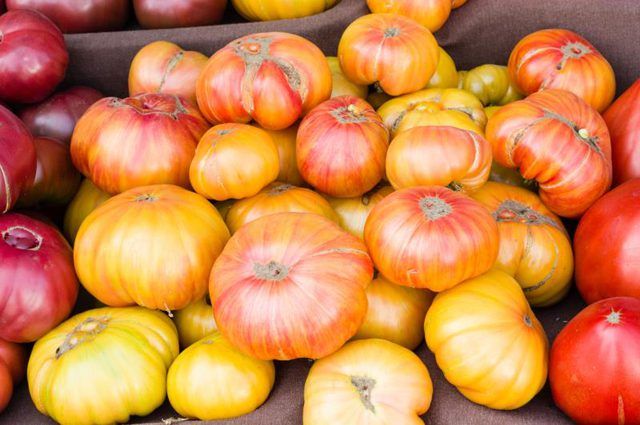Bulbs
Flower Basics
Flower Beds & Specialty Gardens
Flower Garden
Garden Furniture
Garden Gnomes
Garden Seeds
Garden Sheds
Garden Statues
Garden Tools & Supplies
Gardening Basics
Green & Organic
Groundcovers & Vines
Growing Annuals
Growing Basil
Growing Beans
Growing Berries
Growing Blueberries
Growing Cactus
Growing Corn
Growing Cotton
Growing Edibles
Growing Flowers
Growing Garlic
Growing Grapes
Growing Grass
Growing Herbs
Growing Jasmine
Growing Mint
Growing Mushrooms
Orchids
Growing Peanuts
Growing Perennials
Growing Plants
Growing Rosemary
Growing Roses
Growing Strawberries
Growing Sunflowers
Growing Thyme
Growing Tomatoes
Growing Tulips
Growing Vegetables
Herb Basics
Herb Garden
Indoor Growing
Landscaping Basics
Landscaping Patios
Landscaping Plants
Landscaping Shrubs
Landscaping Trees
Landscaping Walks & Pathways
Lawn Basics
Lawn Maintenance
Lawn Mowers
Lawn Ornaments
Lawn Planting
Lawn Tools
Outdoor Growing
Overall Landscape Planning
Pests, Weeds & Problems
Plant Basics
Rock Garden
Rose Garden
Shrubs
Soil
Specialty Gardens
Trees
Vegetable Garden
Yard Maintenance
How to Grow Heirloom Pineapple Tomatoes
How to Grow Heirloom Pineapple Tomatoes. Heirloom tomato plants (Lycopersicon esculentum) are older varieties that have been handed down from generation to generation and often have interesting or unusual features. The heirloom variety called the Pineapple tomato is one example of this type that's named for the bright yellow color of its large and...

Heirloom tomato plants (Lycopersicon esculentum) are older varieties that have been handed down from generation to generation and often have interesting or unusual features. The heirloom variety called the Pineapple tomato is one example of this type that's named for the bright yellow color of its large and flavorful fruits. Like most tomatoes, it needs lots of sun, even moisture and some support to grow well, as well as a bit of extra care to ensure healthy plants.
Getting Started
Start Pineapple tomato plants indoors in spring, about six to eight weeks before night-time temperature stays above 45 degrees Fahrenheit. Sow seeds in flats or small pots, covering them with 1/8th inch of soil; keep them in a sunny spot with lightly moistened soil until you're ready to transplant them outdoors. You can also purchase seedlings from a nursery or garden center when you're ready to plant.
Choose an outdoor spot that gets full sun for at least six hours daily, and set each plant extra-deep into its hole, with soil covering the stem up to the first set of leaves; this promotes root growth from the stem for a strong plant. Space seedlings 2 to 3 feet apart to give them room to spread and allow 4 feet between rows.
Water and Fertilizer
Pineapple tomato plants begin producing ripe fruits 85 to 95 days after planting. Consistent, even moisture helps ensure firm tomatoes that resist cracking and rotting. During dry spells, water about twice weekly, soaking the soil well each time; do this early on sunny days so foliage dries quickly. Adding 2 or 3 inches of organic mulch such as straw once the soil has warmed also helps retain soil moisture while keeping down competing weeds.
To get plants off to a good start, mix about 2 inches of compost, a handful of bonemeal for calcium and 1 teaspoon of Epsom salt for magnesium into each hole at planting. When you first see small green tomatoes, mix 1/2 cup of a 5-10-5 granular fertilizer into soil next to each plant -- called sidedressing -- and repeat when first fruits ripen.
Pruning and Support
It's important to prune pineapple tomato plants because this variety is indeterminate -- growing continuously and producing fruits all season long. Pruning helps keep its size under control, promotes plant health and helps it support the large fruits, which can weigh up to 2 pounds each. Prune a young plant to one or two healthy stems; as it grows, remove thin side shoots -- or suckers -- that grow where leaves originate on stems. Wipe the blade with rubbing alcohol between each cut to discourage spread of disease. Near season's end, cut back stems that have only flowers to encourage ripening of the last fruits.
This variety needs strong support. Use a sturdy stake driven into the ground or a commercial tomato cage, but add the support before planting to prevent root damage. Tie the plant's stems with soft ties to the support as needed.
Avoiding Problems
Because it's an heirloom and not a hybrid, the Pineapple tomato doesn't have strong resistance to fungal disorders than can cause loss of leaves, preventing an abundant crop. To prevent these problems, space plants properly, clear away plant debris regularly and water at the plant's base with a soaker hose or drip irrigation to keep foliage dry. You can also treat young plants with a beneficial fungus such as Trichoderma harzianum, which may help them avoid disease. Dilute the powder at a rate of 3 tablespoons per gallon of water and drench roots with the mixture at planting.
Common tomato pests such as large green hornworm caterpillars or striped Colorado potato beetles can attack the plant; control these by handpicking. Other pests such as greenish, tiny aphids are best removed with a strong blast of water, but do this on a sunny day for fast drying.